
Of all the styles of comics, manga occult-and-horror has the most interesting pictorial evolution, which begins in late-nineteenth-century London. Famous stories (such as Dr. Jekyll and Mr. Hyde) and historical serial killers (such as Jack the Ripper) were all remembered with a scandalous twist of glamour, whether deserved or undeserved, and they influenced creative minds.
As the aristocracy dabbled with the forces of evil, the Pandora’s box opened. There was an undeniable romantic quality to aristocratically attired, wicked characters, and the genre took hold. It’s not so hard to trace the lineage of costume design and see how these origins morphed into today’s popular manga occult-and-horror style. A lot of the past is still with us today. And evil never goes out of fashion. It just gets a facelift. Let’s take a look.
Ah, the Victorian Age. Fair ladies and dashing young men. No one wore jogging pants and Nikes. You wore so many layers that a servant had to dress you. Showing a bit of the neckline was about as daring as a girl could get. The men were buttoned from top to bottom—even some of the shoes had buttons on them!

As you look at the examples in this chapter, note that it’s often the more traditional details and flourishes that give the outfits their style. Men’s costumes often make use of top hats, capes, canes, high collars, wide lapels, folded handkerchiefs, and a single rose. Below are a few of the more popular garment details and accessories for men’s outfits.
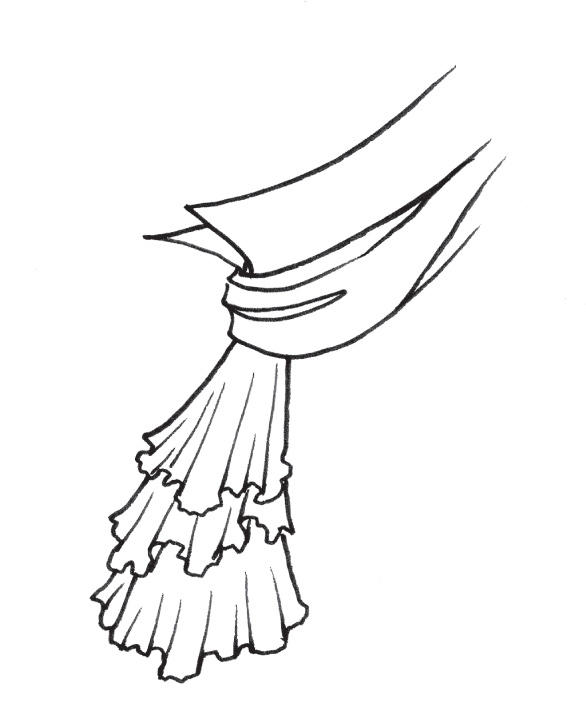
RUFFLED ASCOT
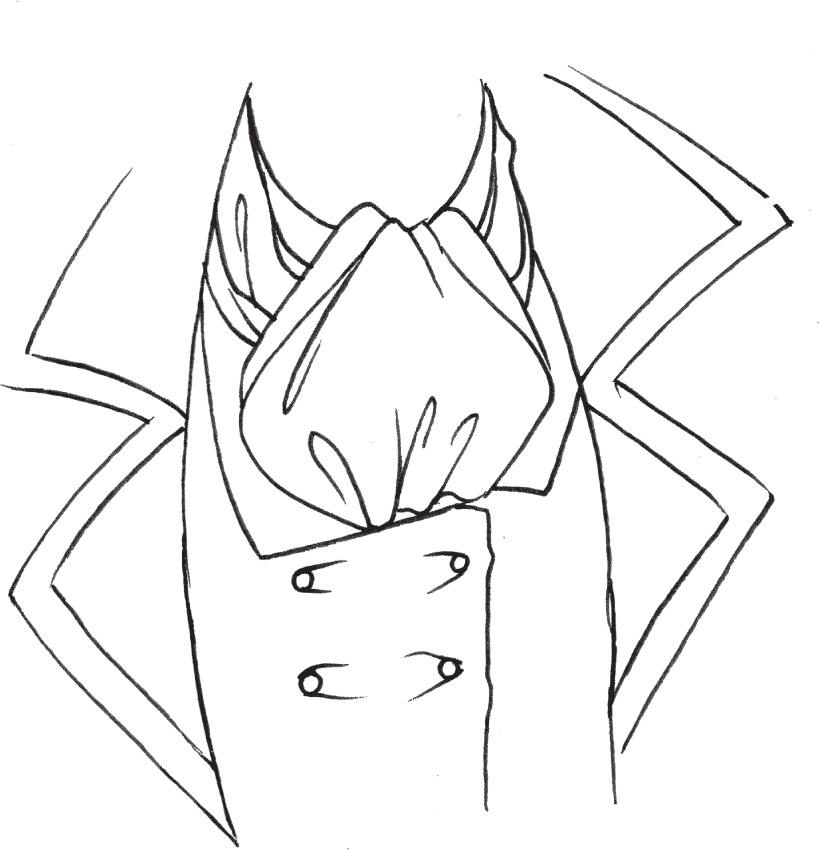
WIDE TUCKED-IN ASCOT

VEST
Note the thin lapels.

UPTURNED COLLAR
This is the pre-preppy upturned collar.

GLOVES
Show the seams for added fashion.
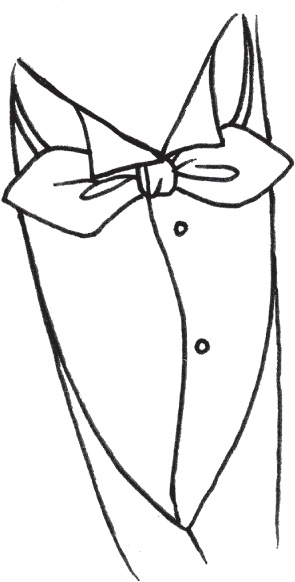
BOW TIE
The shirt collar folds over the top of the bow tie, forming small triangles.

ASIAN-STYLE SLEEVE
Corsets, overworked hairstyles, layer upon layer of clothing, powder-perfect makeup … and you thought your sister took a long time to get ready for a date! Like the men’s outfits, women’s fashions benefit greatly from attention to traditional details: flounces galore, drapery-like folds in garments, laces up the back to tighten the waist, long trains, ornamental dangling earrings, long necklaces, and bracelets. Here are a few more.

FEATHERED HAT
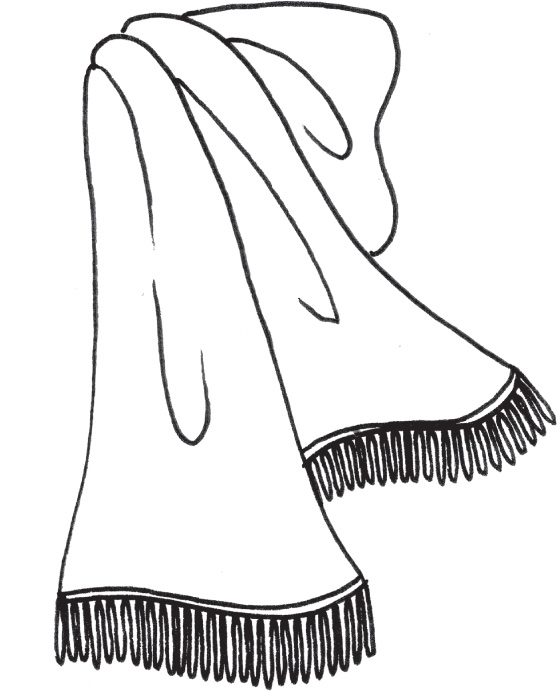
FRINGED SCARF

RIBBON HAIRPIECE
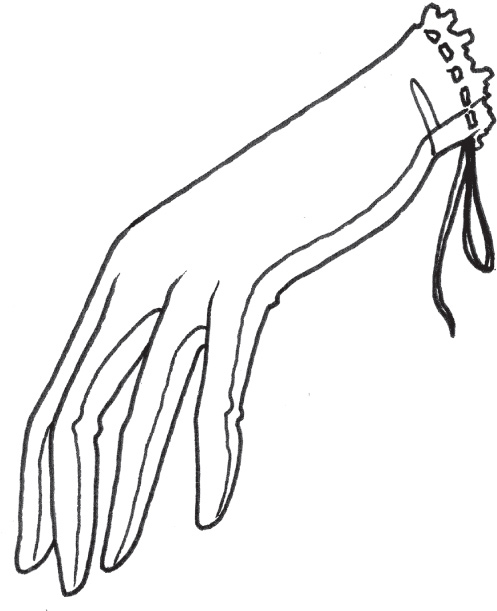
LACE-EDGED GLOVE

BEJEWELED CHOKER

RUFFLE-EDGED COLLAR

DOUBLE-FLOUNCED HEM

PUFFED SLEEVES WITH BOW
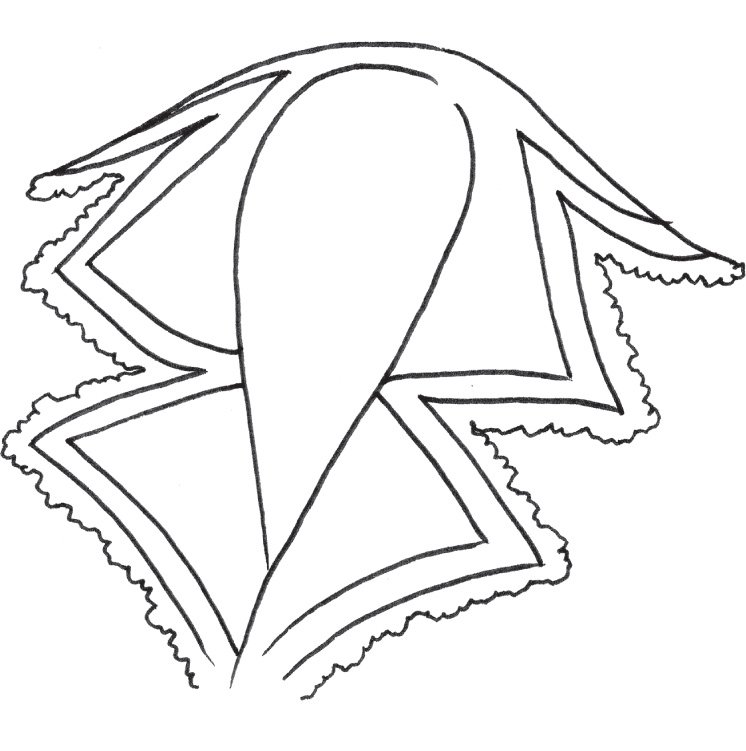
DOUBLE, WIDE LAPEL

EXTRA-WIDE CUFF WITH RUFFLES
Dark, aristocratic characters from the Victorian Age evolved directly into the popular gothic characters that make up a large segment of today’s sophisticated, urbane occult-and-horror manga. These characters maintain the elegance, poise, and style of their mysterious forebears, but they are decidedly modern. Their clothes are still ornate, with traditional touches, but are also macabre. The characters are brooding, and lean, which adds up to a more dangerous look. Instead of simply being mysterious, for example, our new vampire is more introverted, trying to tamp down a cauldron of turbulent emotions. He is a troubled, violent person—a powder keg, boiling quietly just below the surface.
OCCULT GOTHIC MAN
The long jacket borrows from the trench coat look of modern noir, nihilistic characters.
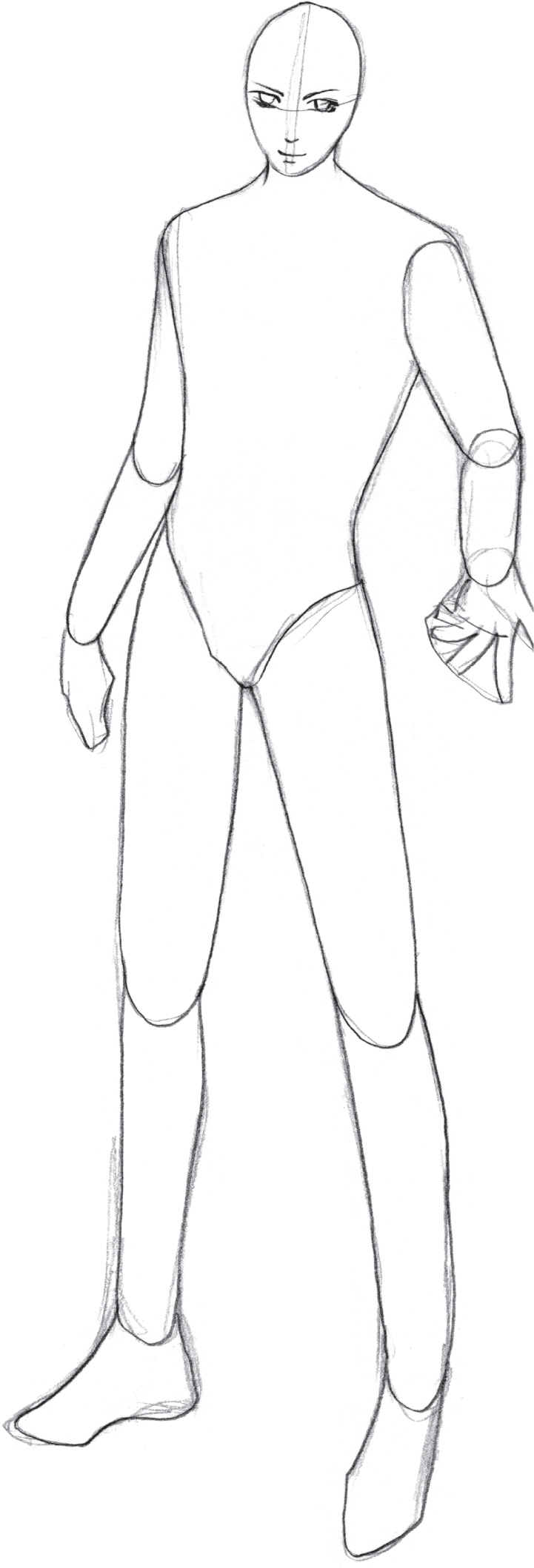


Note the design work on the jacket lapels and lining.
In addition to the gown, there’s usually a fur, a scarf, or a wrap of some kind. Today’s aristocratic female horror character sometimes carries a fan (a typical Japanese accessory) in one hand. Note the shoulder-length gloves (typical of occult characters) and the head decorations, either flowers, jeweled pins, or braided headbands.



One of the prominent features of gothic-style costumes is the layering. Here, we see a jacket under a jacket. It’s a cool look that lends itself to interesting design possibilities—in this case, that square cutout shape just above the waist.

The long tails of the flying creatures help convey the feeling of motion and elongate the line of the direction in which the creatures are moving.

The wide trench coat is a great look. Keep it tight around the waist so that it can billow at the ankles, creating a nice contrast in shape.
The jacket has epaulets. Details like this are a popular manga occult look. The long rows of buttons (as well as the stitching on the hem of the inner layer) are purely decorative elements, used in the same way you might use stripes on a shirt. The buttons have nothing to do with closing the jacket.
A dress with a train—the part of the dress that drags behind the figure—results in a severely formal look. It’s great for characters living in castles or attending balls.

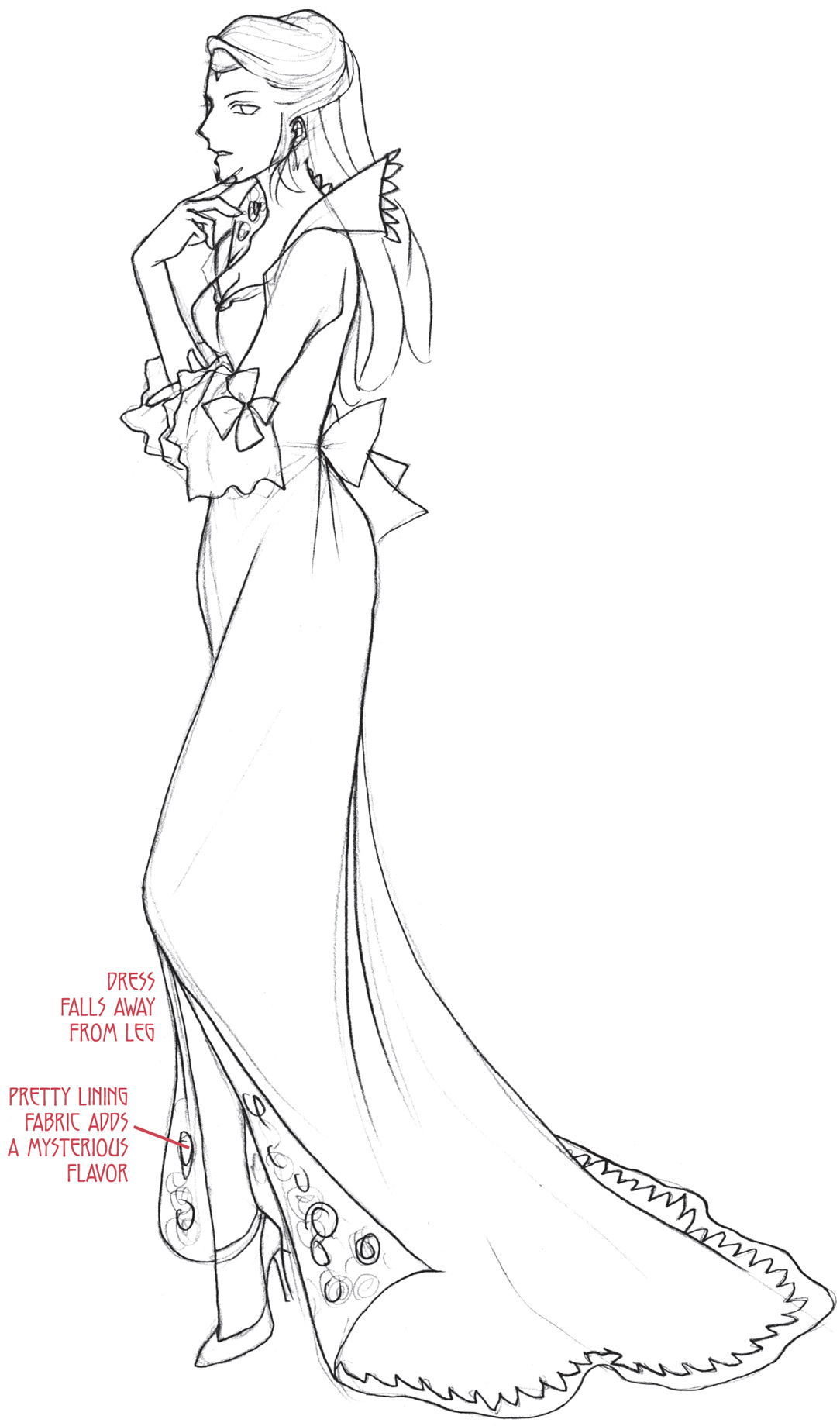

Note that the train hem is not just one smooth curve all the way around. It has folds and ripples in it like any fabric.
Using a combination of embellishments helps you create a fuller character that has more visual interest. For example, look at the clothing details on this semi-gothic man: Nehru collar, epaulets, braided cord, layered jackets, decorative stitching, elaborate cuffs, and split and embroidered pant cuffs. Regardless of genre, use this as a guide for thinking about costume design and attention to detail.



Some occult styles are purely one genre. Others blend manga genres to offer a fresh take on established themes, and the costumes reflect this. Genres, such as horror or shoujo or chibi, used to be firmly fixed in place. But artists found these boundaries too constrictive and arbitrary, so they started breaking them. And readers responded. As a result, there’s more freedom now than ever. In your own art, try bringing a new angle to a genre. Readers are open to it. They’re always eager to see the next new thing. Are your ideas too far out? Maybe. Or maybe your ideas are just what everyone’s been waiting for. Again, regardless of which genre or combination of genres you explore, the costume reflects it and helps convey it to the reader. Take a look.




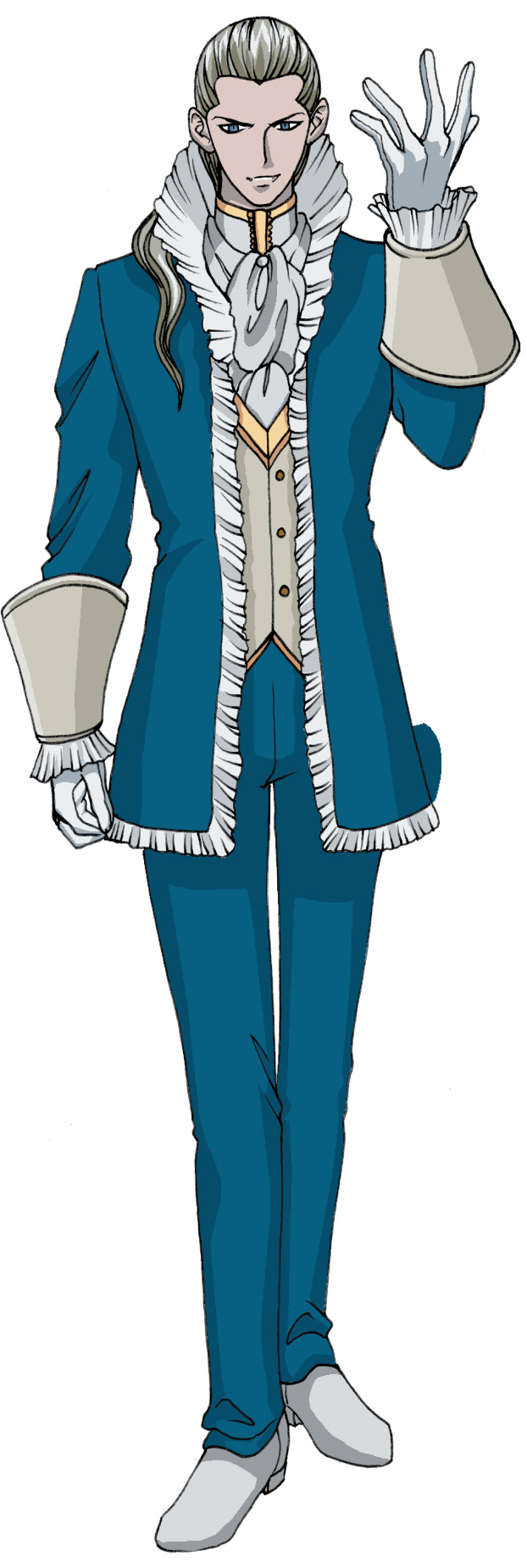
The most common genre to be combined with manga occult and horror is fantasy, especially with characters that hunt and fight the beasts of the underworld. The horror genre makes use of many mythological animals, demons, beasts, and animal-human hybrids, and somebody’s got to hunt them down if the humans are to have any chance of survival. These hunters are borrowed from the fantasy genre, and their costumes are given a medieval twist.
Elves are, by definition, from the fantasy world. Their elfin ears are clear fantasy elements. The cape is seen in both the fantasy and occult genres. The medieval costume and boots straddle the fence between occult and fantasy. Remember, not too long before the 1700s and 1800s in Europe was the medieval period. In the late medieval period, armor and jousting became used more for pageantry than for actual combat, as the days of knights were coming to a close. The costumes, however, continued to influence style. In manga, this medieval style branched off in two directions: occult and fantasy. That is how they are intertwined and have remained closely related.
Like most elves, this character appears young for his years. Small in stature but eager and spry, the elfin “boy” appears to be about 12 to 14 years old, when, in fact, he’s north of about 140. Sounds great, but elfin kids don’t leave home until they’re 60.


SIDE VIEW


FRONT VIEW
TWENTYSOMETHING FANTASY WARRIOR
The difference between the fantasy warrior and the vampire is that the frame of the fantasy fighter will be thicker and more rugged. He’s a mysterious leading-man type. When he commits to battle he is an explosive, vicious fighter who gives no quarter. And that’s what also makes him exciting. Behind his placid, almost wistful demeanor lies the heart of a warrior.
Various materials are used for the fantasy warrior outfit: metal, leather, cloth, and, sometimes, animal skins. But remember, this character has entered the occult world and the occult genre. Therefore, he must be colored using occult-style colors, not fantasy colors, which are bright. His world is dark and murky—a hellish place where evil often wins. (See this page for more on occult color.)

SIDE VIEW
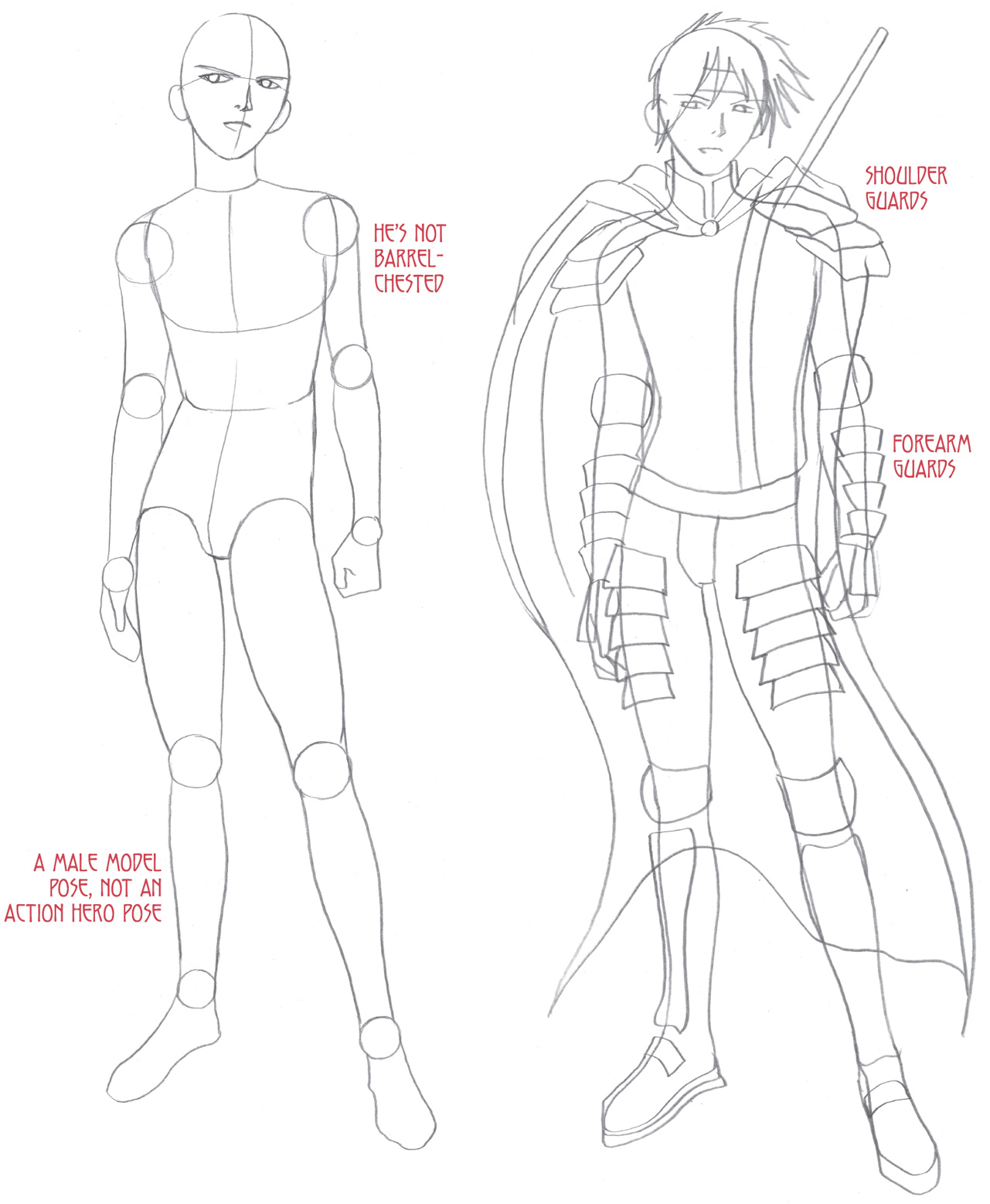
FRONT VIEW
Face it, when you find a blood-sucking vampire or a flesh-eating beast, you’re not going to be able to talk it into giving itself up. Maybe you can convince your mom of anything, but not these guys. In manga occult, you need to bring something a little more convincing than a good argument. Below, you’ll find some excellent options. Oh, and one more thing: Don’t fall for the “I had a bad childhood” line. Maybe the vampire can find a good therapist in hell. Give him the stake.
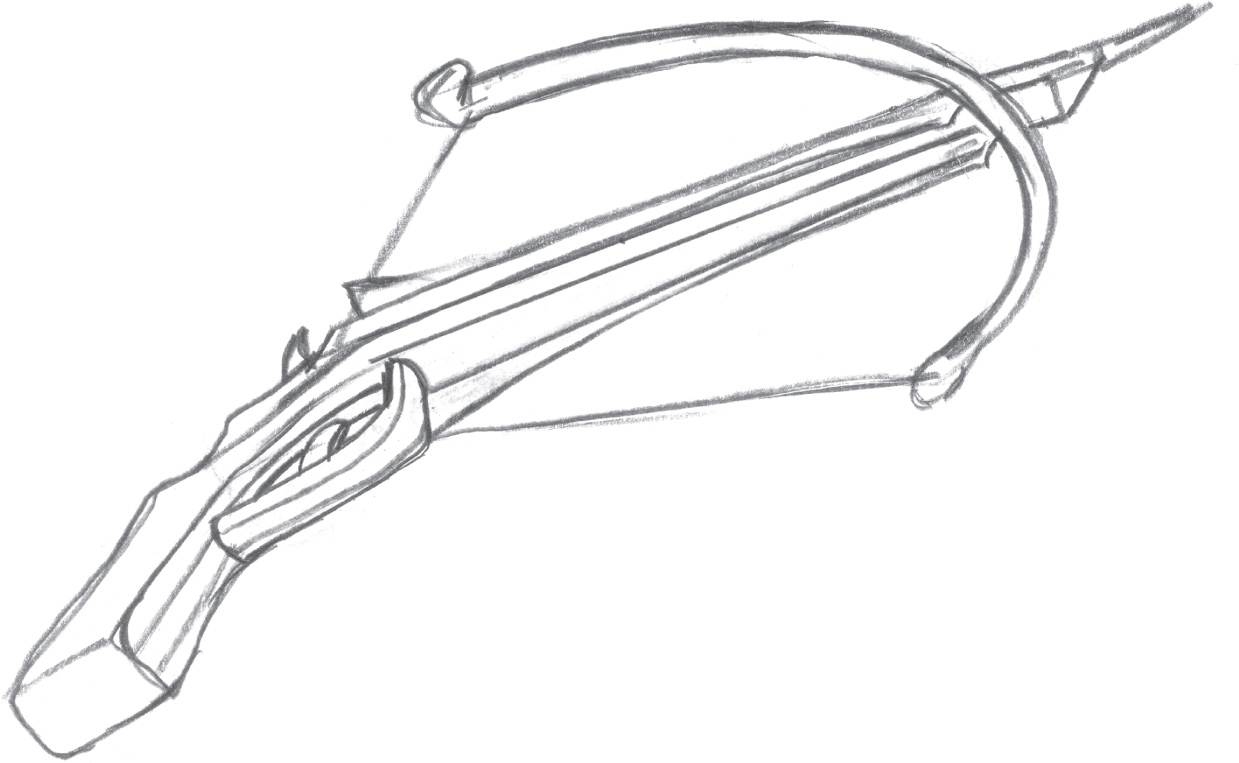
CROSSBOW GUN
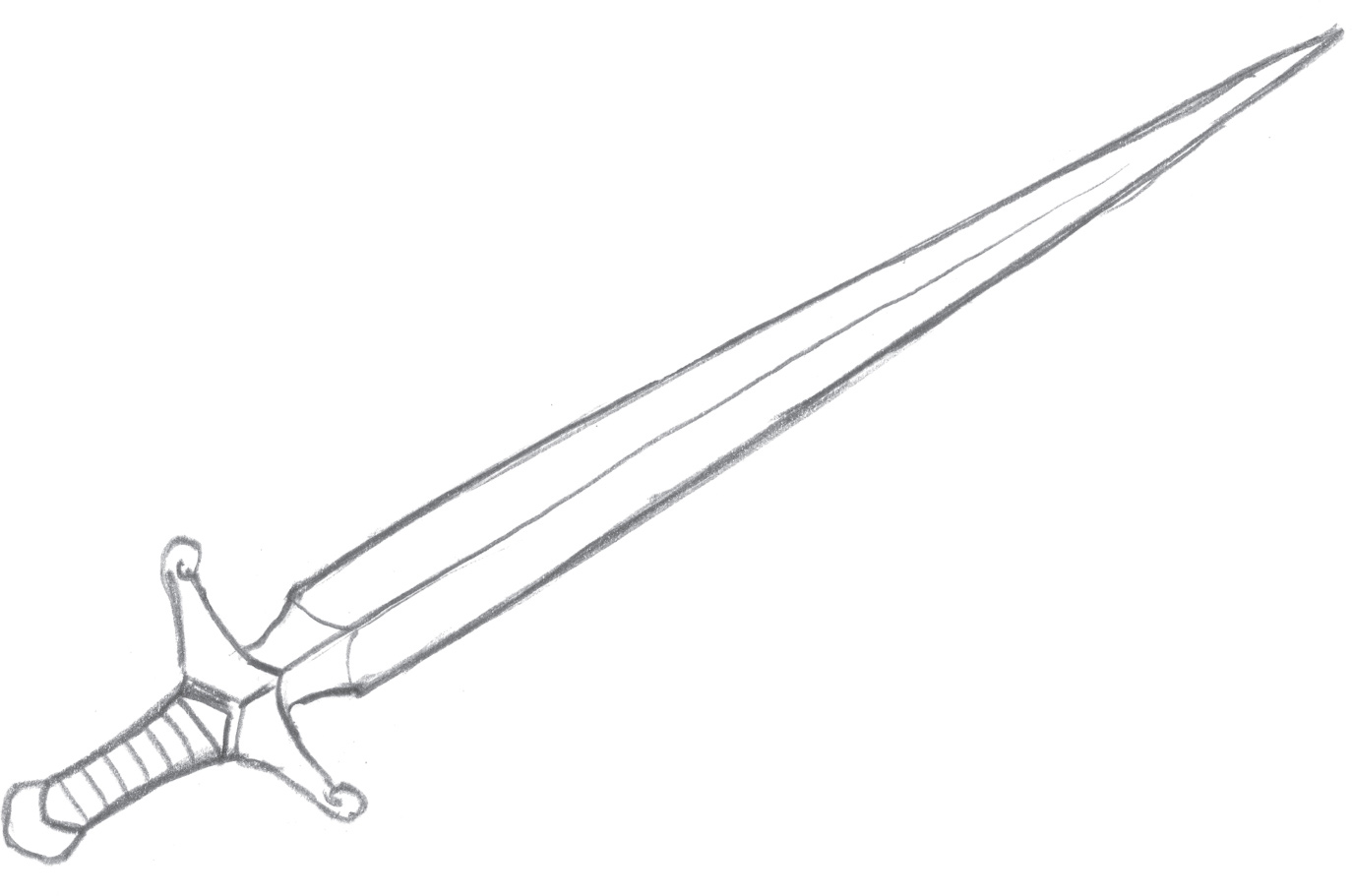
LONG SWORD
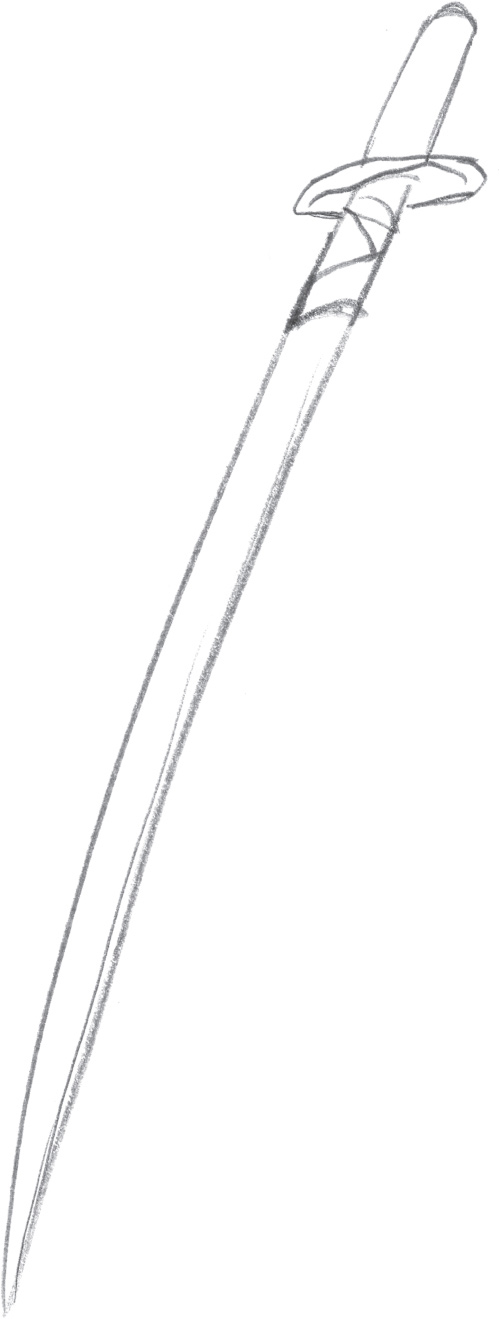
SAMURAI BLADE
A headless vampire is a harmless vampire, I always say.

LONGBOW

SPEAR/ SWORD
Tomato, tomahto—whatever works.

CROSS
Causes massive allergic reaction in vampires.

WHIP
It won’t kill “Vampy,” but it’ll cool his heels ’til help arrives.
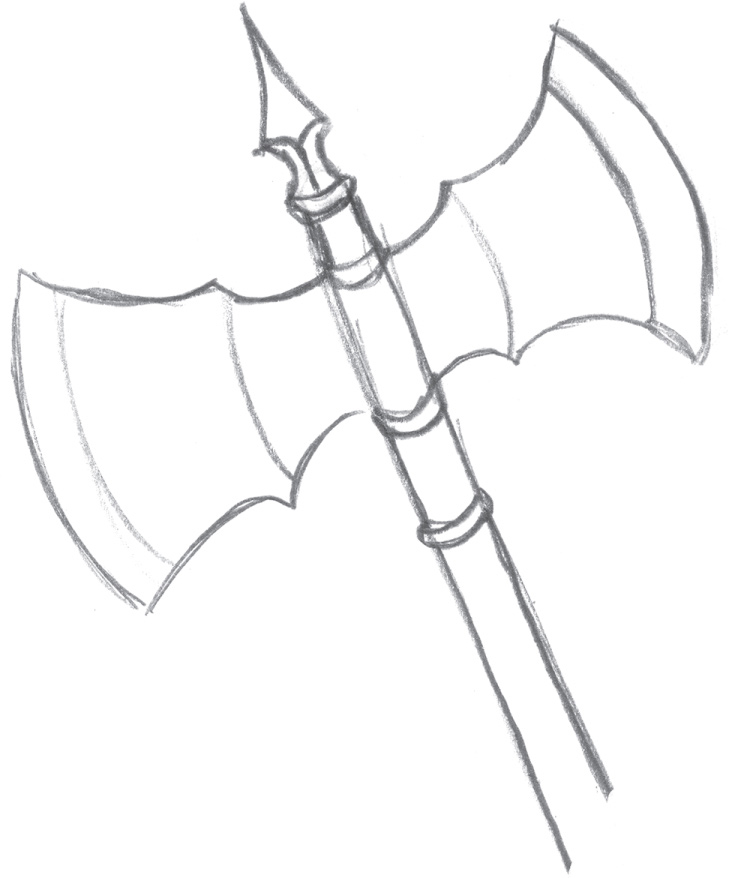
DOUBLE-BLADE AXE
With a spear tip, no less! Lots of “ouch” potential.
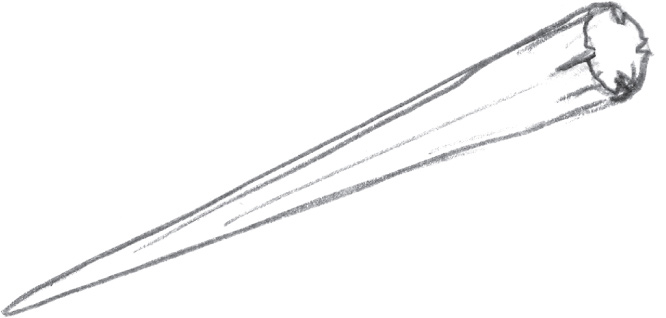
WOODEN STAKE
Works only when plunged into the heart of a vampire.
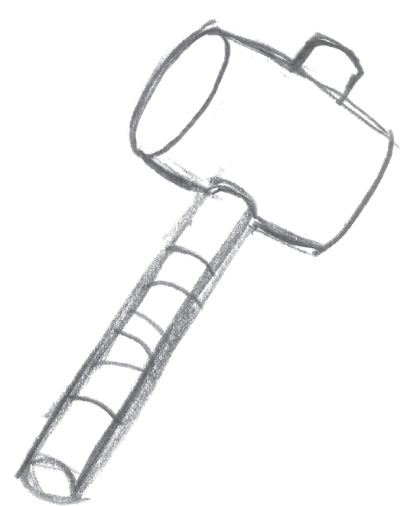
MALLET
To smack the stake into the vampire.
Once engaged in battle, the fantasy warrior will fight to the death—usually the beast’s. This is not a genre in which the good prince kills the dragon to win the princess’s heart. Sometimes, dragons just piss him off.